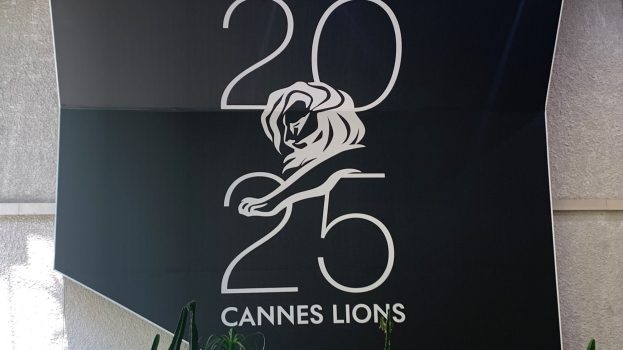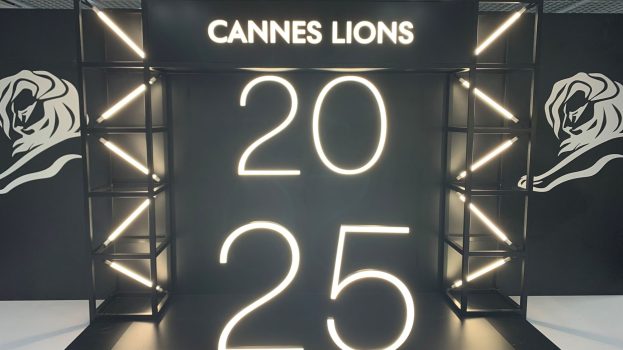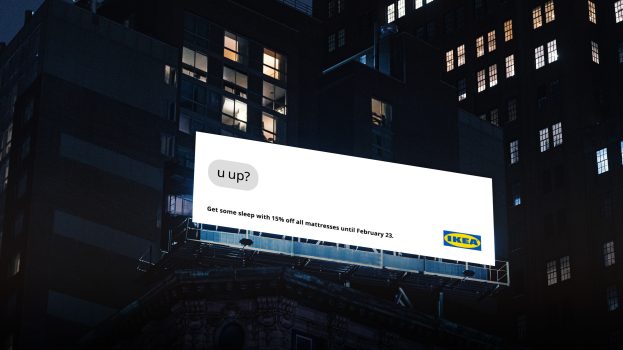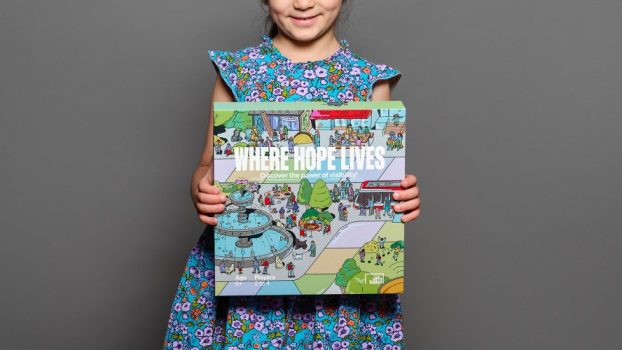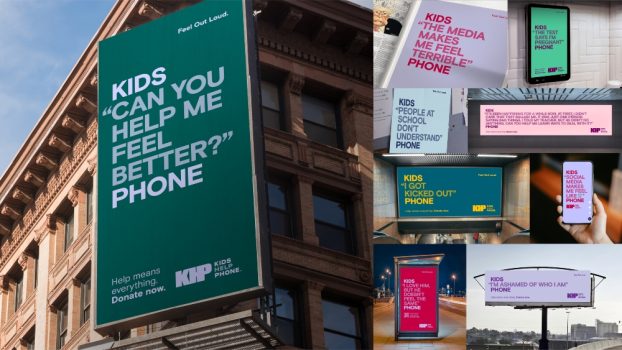“What’s the youngest brand ever to win strategy’s Brand of the Year?” asks Kevin Banderk, chief Koodo officer, with a tiny twinkle in his eye. He’s spent the past 45 minutes being grilled on the brand’s evolution, along with Lise Doucet, VP, marketing and communications, and now he’s turning the tables.
It’s a good question. While this isn’t the first time a baby-faced brand has graced our cover (we feted Toronto FC in 2009, at just three years old), Koodo’s ascent has been notably swift. Since its launch in March 2008, with a national mandate and a budget of over $5 million, Koodo has established itself as a major player in the value mobile scene, and one of the country’s most visually recognizable brands. It had the most successful launch quarter of any wireless provider in Canadian history (in terms of customers acquired) and that first year, J.D. Power and Associates ranked it highest in Canadian customer satisfaction for post-paid wireless service.
So how did it happen?
A subsidiary of Telus, with a marketing and communications team of just four people, Koodo began with a youth-friendly brand proposition: affordable mobile service offering the features 18- to 34-year-olds want (i.e., talk and text) without pricey extras or long-term commitments.
Working with Toronto-based Taxi 2, which remains Koodo’s AOR, the brand hit upon the notion of “fat-free mobility.” The memorable launch campaign featured spandex-clad aerobics enthusiasts, dubbed Koodocizers, who encouraged customers to “flatten system access fees,” and “reduce bill bulge” via brightly coloured OOH, TV, print and transit ads placed by Toronto-based MAOR Media Experts, with PR by Strategic Objectives.
“When we launched, everyone thought we spent this enormous amount of money, because we were noticed,” says Banderk. “People said they saw us everywhere. Our budgets are actually one-quarter to one-third of the majority of our competition, but it stands out.”
Doucet remembers when the team came up with the idea of using retro-’80s, 20 Minute Workout-inspired wardrobes for the campaign. “When we did the photo shoot and commercials, we thought we would have to go to vintage stores to find this stuff,” she says. “In fact, no, we just had to go to American Apparel, because this stuff was au courant at the time.”
By the time Halloween 2008 rolled around, the brand started seeing snapshots of people dressed like Koodocizers, while a year-end episode of This Hour Has 22 Minutes lampooned the characters.
“We probably made the majority of most liked and most hated advertising simultaneously,”
says Banderk.
Whether people loved the Koodocizers or just loved to hate them, Koodo had made a splash and was beginning to establish the voice it wanted in the mobile marketplace: straightforward, transparent and refreshing. The diet-themed campaign established several iconic visual elements for the brand, including a typography style that mimicked the black-and-white nutritional facts box on the back of food packaging, as well as the brand’s four-colour palette of bright blue, green, pink and orange (in keeping with the food motif, they’re known internally as blueberry, lime, raspberry and tangerine).
“The Koodo brand was designed to be distinctly different from any other brand in the market,” says Lance Martin, ECD, Taxi 2. “Koodo has become so synonymous with this [neon] colour scheme that consumers know that a Koodo board is going up as soon as they see the neon backdrop being posted.”
But one of Koodo’s most recognizable brand assets isn’t visual at all. When launching Koodo, Banderk and Doucet knew that the brand name – a nonsense word inspired by the sound and sentiment of “kudos” – might be mispronounced. So they developed a mnemonic, a two-note signoff that verbalizes the brand name at the end of every TV and radio spot. Little did they know that the mnemonic would soon be sung back to them by adults at cocktail parties or small children walking by Koodo kiosks at malls.
“One of the producers at this radio shop we use all the time says that every week someone comes in and says, ‘Make me a ‘Koodo,’” Doucet says, noting that the catchy jingle helps the brand stand out in a cluttered advertising environment.
After about a year with the Koodocizers, Banderk and Doucet knew it was time for the campaign creative to change.
“We wanted to make sure the brand and campaign were two separate things,” Banderk says. “The brand stays true – colour schemes, what we stand for, the label, the mnemonic – and a campaign is there to grab attention and showcase certain aspects of our offer. We didn’t want to get into a mode where people thought of us as the spandex company.”
With that in mind, Koodo launched its “Bigbillification” campaign, in which print ads used faces with exaggerated smiles to symbolize the delight customers felt about using Koodo, with the copy using made-up words to sell its value-priced services. Since these big-mouthed characters didn’t play as well on TV, the commercials went a different route, with a variety of brightly coloured characters (from humans to aliens) rearranging themselves to spell more made-up words, like “textfinity” and “contractophobe.”
“I think the underlying premise with everything we do is to be fun and irreverent and not take ourselves too seriously,” says Doucet. “It’s just a phone; it’s not world peace.”
By the time the 2009 holiday season had arrived, Koodo had taken irreverence to a whole new level with an online game called “Sugar Streak.” Housed on YouTube, the live-action video series invited viewers to chase a cocky, cartwheeling gingerbread man through the streets of Toronto, deciding at the end of each video whether to turn right or left. By making the correct choice each time, the viewer could make it through 13 videos, leading to the grand finale and the offer of $25 off any phone plus a $100 gift card.
“The week it launched it was the number one YouTube video in Canada,” says Martin. “It has now been viewed over 1.6 million times and continues to get over 28,000 views a month, without any direct ad support.”
In March, Koodo climbed into the ring with yet another unexpected spokesperson: a tiny Mexican wrestler named El Tabador, whose tagline invites consumers to “Tab in for phone freedom.” The character’s name and tagline are both references to Koodo’s “tab” program, which allows up to $150 of the cost of a new phone to be placed on a tab, so no money is required up front and 10% of the monthly service bill is contributed to paying down the tab – no three-year contract required.
As Doucet explains, “The tab is a little complicated to understand because it’s unique in the marketplace, so El Tabador allowed us to communicate that in a fun way.”
“In our first year and a half, we’d blown through any awareness targets we had,” says Banderk, adding that Koodo has brand awareness at 96% among its 18-to-34 demo and 85% among the mass population. “The next step was getting people really familiar with what was unique about us.”
El Tabador was launched through a blitz of cinema and TV spots, online content, wild postings and OOH. A clever 3D billboard execution saw the luchador’s image encased with fencing, with the line “Challenge contracts to a cage match.”
A YouTube game launched this spring called “Get in the Ring” allowed visitors to take the point of view of El Tabador, selecting the wrestling moves that he uses against opponent Bloatimus Contractimus. Koodo also shot a YouTube video with wrestler Bret “The Hitman” Hart, called “Behind the Mask,” in which Hart recalls trying to remove the four-inch athlete’s mask during a fight. “He gave me one stitch,” Hart deadpans, gesturing to an imperceptible scar on his forehead. “One stitch is all it takes.”
Doucet explains El Tabador’s appeal, in terms of campaign work: “For us, he’s very elastic, no pun intended. Our brand has evolved. At the beginning, it really was talk and text but social networking has become a basic need for our target, and he’s able to tell that story as well.”
For this year’s back-to-school season, an especially active time for telcos, Koodo unleashed a slew of new El Tabador ads that focused on social networking plans. It also partnered with MuchMusic and MusiquePlus to create the “Last Mask Standing,” a competition giving away a Mexican vacation and $1,000 spending money, which was promoted through social media. In September, four contest finalists were flown to the music channel’s head office, where they competed in endurance challenges while wearing a luchador mask in one of Koodo’s core colours. The resulting footage was used in on-air spots and viewers could vote online for their favourite masked competitor, for a chance to win a trip of their own.
It’s Koodo’s first time working with MuchMusic – and developing a brand partnership like this in general – and Doucet says that while they haven’t seen the final numbers yet, she’s been happy with the response so far.
“MuchMusic is very good at programming and putting together a show that’s entertaining to their target, and their target aligns perfectly with ours,” she says. “It’s been a nice way to leverage their know-how with our brand.”
As back-to-school turns to holiday shopping, expect to see more of El Tabador’s fight for “phone freedom,” more of a focus on social networking and more quirky, colourful campaigns. Unlike the competition, Banderk says, “We’re never trying to be cool. We’re trying to be authentic, say things how they are and put a smile on someone’s face.” While the campaigns may not be sexy, Koodo’s one-two punch of whimsy and brand recognition have made it a knockout in 2010.
Jump to:
Brands of the Year 2010 intro
A&W cooks up nostalgia
Degrassi keeps hitting the mark
Mark’s knows what works
TIFF takes the spotlight

